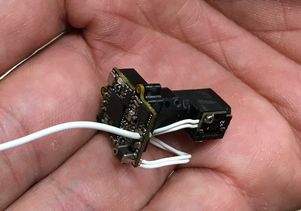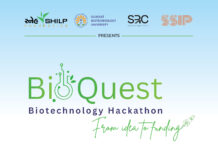UCLA’s Open Source Device Gets $8.3M Grant From NSF
An $8.3 million grant from the National Science Foundation has now been awarded to researchers at the UCLA who have designed an open-source mini microscope.
This tiny, do-it-yourself microscope — which can be built from instructions posted online — has opened a new universe to brain scientists in at least 200 labs worldwide.

The tool can be mounted on an animal’s head to see neurons firing and memories being created or to see the differences between healthy brains and those with neurological conditions.
The five-year grant will allow the scientists to further refine their design to combine electrical and optical recordings, which will give them the ability to visualize how brain regions and large groups of brain cells work together as the brain senses, learns, plans and executes actions.
“The UCLA scientists posted parts lists and instructions for building and using the device, as well as links to video tutorials, on their own wiki page, which has become a forum for conversations with other scientists from around the world,” according to a UCLA news release. “One researcher posted a note to say that a 2 gram model would be helpful for recording brain activity in songbirds, which prompted the UCLA team to produce a lighter version of the microscope. Another request from a scientist who studies bats prompted Golshani’s lab to create a battery-powered wireless version that saves data onto a micro SD card.”
“We’ve given this to the community and the community is using it,” Golshani said in a prepared statement. “If you build a tool and let a lot of people use it for their own research, the impact is much, much larger than if you keep it to yourself.”
The 1-inch-tall, 4-gram “miniscope” was conceived in 2011 when creator Peyman Golshani, a UCLA neuroscientist, read about a miniaturized microscope developed at Stanford University that was light enough to be worn by lab mice. However, the commercialized version cost about $150,000, which did not work for Golshani. So, he set out to create a cheaper version that could be shared with other researchers.
With the help of UCLA neurologist Daniel Aharoni and other colleagues, Golshani only needed four months to create his own version, made mostly from off-the-shelf parts that cost $1,000 altogether.
The UCLA team themselves have used the miniscope to study the brain’s role in memory creation and retention. In mice, the team identified how the brain links different memories over time, and even devised a method for the middle-aged brain to reconnect memories that have since been separated.
The researchers further plan to hold workshops to teach scientists how to build and use the microscope devices, and will also conduct classes for K-12 and college students. Golshani and his team also intend to establish an outreach program through partnership with the Minority Access to Research Careers program at UCLA, as well as the UCLA Center for Excellence in Engineering and Diversity, to involve highly diversified high school and undergraduate students in this research.























